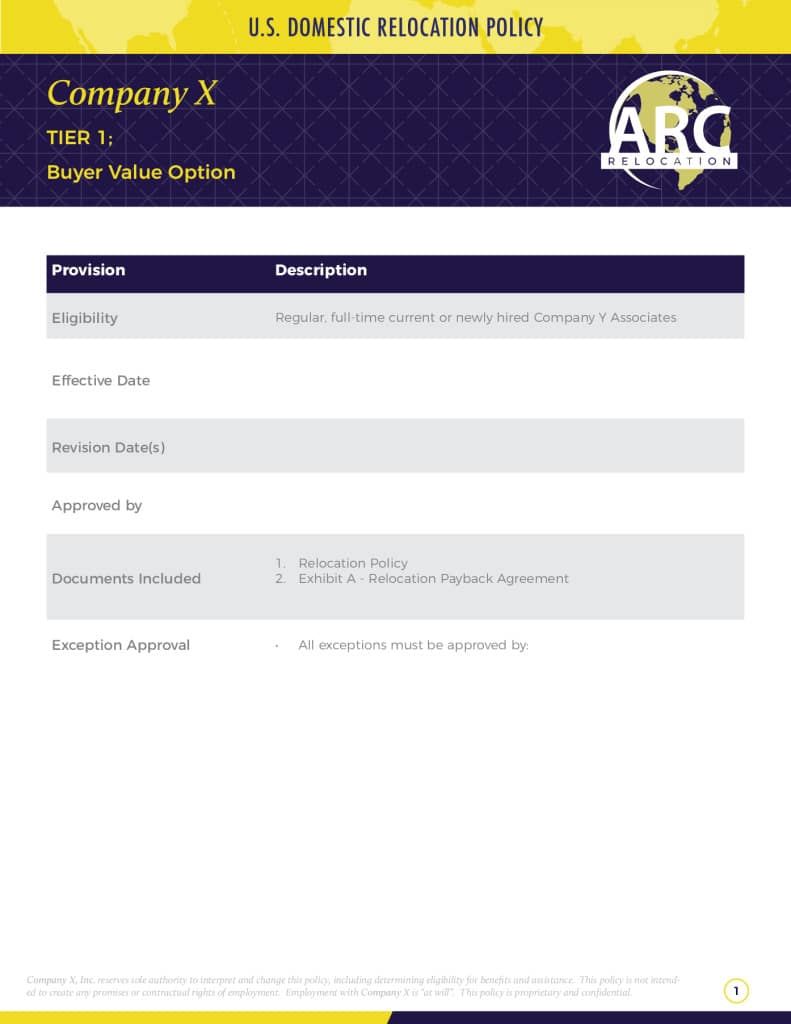
Do you know the difference between a Buyer Value Option (BVO), an Amended Value (AV) and direct reimbursement program? Relocation home sale programs require learning new terminology, new concepts and can be complex and confusing if not explained well. Some programs may seem similar to each other, but may offer a drastically better solution for both the transferee and the corporation depending on the situation, especially where tax implications are concerned.
After the 2018 Tax Reform Bill, all employee relocation related deductions were eliminated. In other words, all relocation expenses became taxable.
However there is one tax protection that remains in the employee relocation process, the Buyer Value Option (BVO) otherwise known as an “Amended Sale”. The good news is a BVO covers the highest expense in the relocation process, home sale costs. Home selling costs are consistently reported each year as the number one expense during an employee relocation.
In turn, for companies who “tax assist” or “gross-up” employees the home sale gross up is the highest gross up in the employee relocation process. It is of course up to the company whether or not selling costs will be covered and whether or not a company choses to tax assist/gross-up an employee. For those that do, a BVO program will “tax protect” these costs in turn saving the company from having to “tax assist” their employee and essentially eliminates the need to “gross-up”.
On average this saves the company $15,000 or more per home sale (depending on the selling price of the home). As such, eliminating this expense can offer a significant savings to your employee relocation program. However a BVO program is not without its downsides. Below is an overview of the program, how it works, and why ARC is considered one of the top relocation companies in the world at managing a BVO program.
Removes financial burden to employee for “reimbursement” process
Eliminates front-end tax costs
Eliminates back-end tax costs (“gross-up” and “true-up”)
Stream-lines the home sale process
Sale must present risk of a “fall thru” and the home could be taken into inventory (increasing costs to the company)
A Buyer Value Option Program (BVO) gives assistance to employees who are relocating and need to sell their home.
The Buyer Value Option program requires the employee to find a buyer for their property – the offer from the buyer establishes the value of the home. This “buyer value” is the price the company pays the employee for the property.
The company then sells the property and incurs the associated costs. The costs are tax-deductible for the company.
This beats the alternative of the company paying the costs for the employee, which would then be taxable. Meaning either the company or the employee has to bear the tax.
Here’s how it could work in a typical relocation:

As opposed to Buyer Value or “Amended Sale” programs, Direct Reimbursement Programs used to be the most common home sale programs utilized by corporations. With this program, the employer literally reimburses the employee for the selling costs associated with the sale of the employee’s home. While this may seem like an easy method for paying the employee back for the costs incurred by the employee for relocation, in reality, the tax liability is much greater for both the employer and employee than with the BVO program.
The reimbursed amount paid to the employee for relocation costs are actually viewed by the IRS as taxable income to the employee. In order to level out the tax burden for the employee, it has become common practice for the employer to “tax assist” or “gross-up” the employee for the taxes to help make that employee whole in the transaction. This can become a never ending cycle, as the IRS also views the gross-up amount as taxable income to the employee.
In some cases this can throw the employee into a higher tax bracket for the entire year, which means that there are both “front end” and “back end” costs to be considered.
Here’s how the reimbursement scenario might look:
Sales price of the home